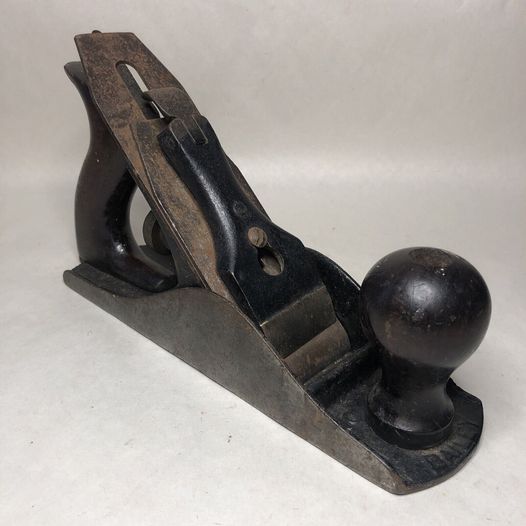
The Stanley Smooth Wood Plane is a classic hand tool that has played a significant role in the woodworking world for over a century. Its history, usage, and legacy are deeply intertwined with the evolution of woodworking practices and the craftsmanship of artisans worldwide. Let’s explore the fascinating journey of this iconic tool.
History of the Stanley Smooth Wood Plane
Origins of the Wood Plane
The history of the wood plane dates back to ancient times, with early examples found in Roman archaeological sites. These rudimentary tools were crafted from wood and iron, allowing carpenters to shape and smooth wood with precision. However, it was during the 19th century that the wood plane evolved into the more sophisticated designs we recognize today.
The Birth of Stanley Rule and Level Company
The Stanley Smooth Wood Plane owes its origins to the Stanley Rule and Level Company, which was established in 1857 by Frederick T. Stanley in New Britain, Connecticut. Initially focusing on manufacturing hardware products, the company soon recognized the need for high-quality woodworking tools and expanded its offerings to include hand planes.
Stanley’s Innovative Designs
In 1869, Stanley acquired Leonard Bailey’s patents for metal-bodied planes, a pivotal moment in the company’s history. Bailey’s innovative designs revolutionized the woodworking industry, offering superior adjustability and durability compared to traditional wooden planes. Stanley’s adoption and further refinement of these designs set the stage for the company’s dominance in the hand tool market.

The Rise of the Bailey Line
Stanley’s most iconic series of wood planes, the Bailey line, named after Leonard Bailey, became synonymous with quality and precision. Introduced in the late 19th century, the Bailey line featured various types of planes, including block planes, jointer planes, and smooth planes. The Stanley No. 4 Smooth Plane quickly emerged as the most popular model in the lineup due to its versatility and exceptional performance.
Usage of the Stanley Smooth Wood Plane
Purpose and Functionality
The Stanley Smooth Wood Plane is primarily used to smooth and flatten the surfaces of wood. It excels at removing small amounts of material to create a fine finish, making it an indispensable tool for furniture makers, carpenters, and craftsmen. The plane’s blade, known as the iron, is set at a slight angle, allowing it to shave off thin layers of wood with each pass.
Components and Operation
The typical Stanley Smooth Wood Plane consists of several key components:
- Body: The main structure, usually made of cast iron, provides stability and weight for smooth operation.
- Iron (Blade): A sharp, adjustable blade that cuts the wood.
- Frog: A metal piece that holds the iron at the correct angle and allows for fine adjustments.
- Cap Iron: Secures the blade in place and minimizes chatter during operation.
- Lever Cap: Holds the iron and cap iron securely in place.
- Handle (Tote) and Knob: Provide grip and control during use.
To operate the Stanley Smooth Wood Plane, craftsmen typically follow these steps:
- Adjustment: Set the blade depth and angle using the adjustment mechanisms.
- Planing: Hold the plane firmly with both hands and push it across the wood surface in smooth, even strokes.
- Inspection: Regularly check the wood surface for smoothness and adjust the blade as needed.
Versatility in Woodworking
The Stanley Smooth Wood Plane’s versatility makes it a favorite among woodworkers. It can be used for various tasks, including:
- Smoothing Rough Lumber: Removing imperfections and creating a polished surface.
- Jointing Edges: Ensuring straight and even edges for joining boards.
- Trimming and Shaping: Adjusting dimensions and shaping curves.
- Finishing Touches: Adding a final touch to enhance the appearance of finished pieces.
Legacy of the Stanley Smooth Wood Plane
Enduring Popularity
The legacy of the Stanley Smooth Wood Plane is reflected in its enduring popularity among both professional woodworkers and hobbyists. Despite advancements in power tools, many artisans continue to rely on the tactile precision and control offered by hand planes. The Stanley No. 4 Smooth Plane, in particular, remains a favorite for its balanced design and exceptional performance.
Influence on Modern Tools
Stanley’s innovations in hand plane design have had a lasting impact on modern woodworking tools. Many contemporary hand planes draw inspiration from Stanley’s classic designs, incorporating advanced materials and engineering while retaining the timeless principles of craftsmanship.
Collectibility and Antique Value
Vintage Stanley Smooth Wood Planes have become highly sought-after collectibles, with enthusiasts valuing them for their historical significance and craftsmanship. Well-preserved examples of early Stanley planes can command high prices at auctions and antique shops, reflecting the enduring legacy of these tools.
A Symbol of Craftsmanship
Beyond their practical use, Stanley Smooth Wood Planes symbolize the artistry and dedication of craftsmen throughout history. These tools represent a connection to the past, where skilled artisans shaped wood with precision and care, producing works of enduring beauty.
Conclusion
The Stanley Smooth Wood Plane is more than just a tool; it is a testament to the ingenuity and craftsmanship that have shaped the woodworking industry. Its rich history, versatile usage, and lasting legacy make it a cherished companion for woodworkers worldwide. Whether in the hands of a seasoned craftsman or a passionate hobbyist, the Stanley Smooth Wood Plane continues to inspire creativity and excellence in woodworking, embodying the timeless pursuit of perfection in every stroke.